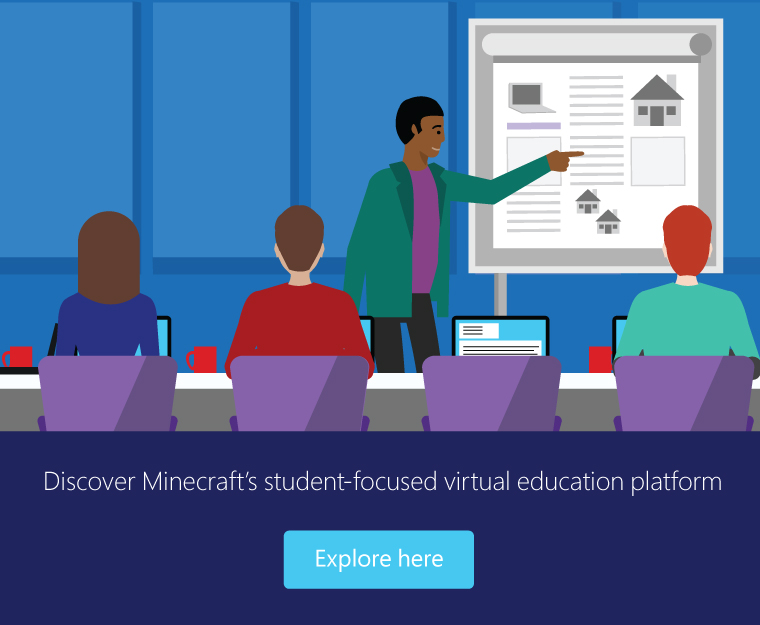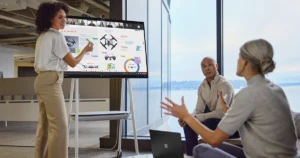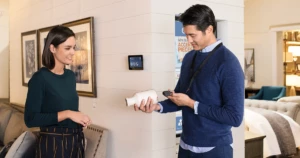
How Omaha Virtual School uses Minecraft to enhance learning
| Focus on: Engage students, Empower educators |
What’s it like to take the classroom beyond its four walls, merging the physical world with the virtual? Traditional face-to-face interaction meets virtual collaboration. It’s a new way of learning and a new way of leading.
For the Omaha Public School District, these concepts became an integral part of the teacher-student educational experience. The district is piloting a virtual school—the first of its kind in the state of Nebraska—modeled on a successful school in Kansas.
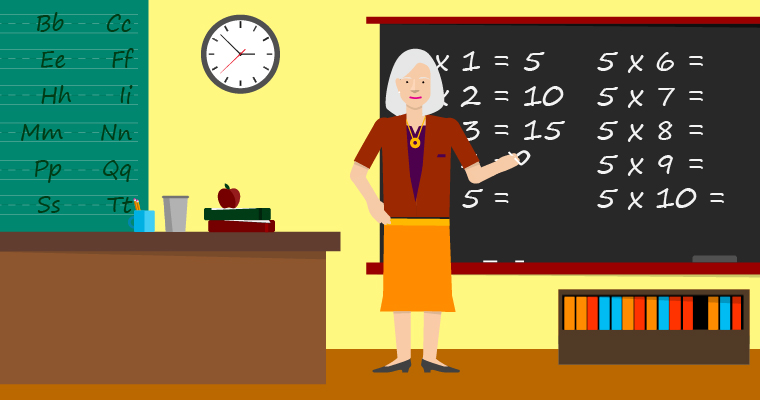
The blended environment is allowing Omaha Virtual School and its 140 students in grades K-8 to embrace unprecedented opportunities. Small groups of students work through a station rotation model, where students move as a group from subject to subject in the classroom, meeting for three hours once a week. Outside of school, students work online individually in the K12.com curriculum. The merging of traditional and virtual education models has created an innovative environment that reimagines teaching and learning.
This is a real story of digital transformation.
A new education model emergesRob Dickson, the Director of Information Technologies at Omaha Public Schools, saw an opportunity to advance teaching and learning by leveraging technology for instructional purposes. He and his team began developing a model for Omaha based on a virtual school in Kansas. Their concept would reproduce best practices around curriculum but also hold teachers, parents, and students accountable.
Critical to the new model has been adopting an “It’s okay to fail” mindset—something that doesn’t come easily to classroom teachers or traditionally-educated parents, but is common to many successful start-ups. With this mindset, Omaha Virtual School gets to try new ideas, learn from what works and what doesn’t, and make rapid improvements that push the boundaries of what’s possible in education.
Another new frontier for the team and parents of Omaha Virtual School students has been the idea of using gaming as an education tool. Knowing that learning occurs naturally through a combination of observation, trial and error, and play-based practice, the Omaha Virtual School leadership team believed that an open-learning environment like Minecraft would allow students the freedom to experiment and challenge themselves. Minecraft is an open world virtual game that promotes users to build, create, and problem-solve.
“Minecraft fits the mold of where our students are today,” Dickson says. “It’s allowed learning to happen outside of the traditional school environment. As a society we think globally, and now with Microsoft tools like Skype, we are helping students think globally, too, about their contribution to society.”
Microsoft technologies enable the virtual school with multiple tools for success. Surface provides the flexibility to work remotely; OneNote stores student portfolios, Study Island, and map data; and K12.com’s thorough analytics show when students and parents are logged in and for how long, telling a compelling story about each student’s progress. Teams of teachers and parent groups use Microsoft Groups to share best practices. And the Minecraft platform gives students a modern way to learn traditional subjects.
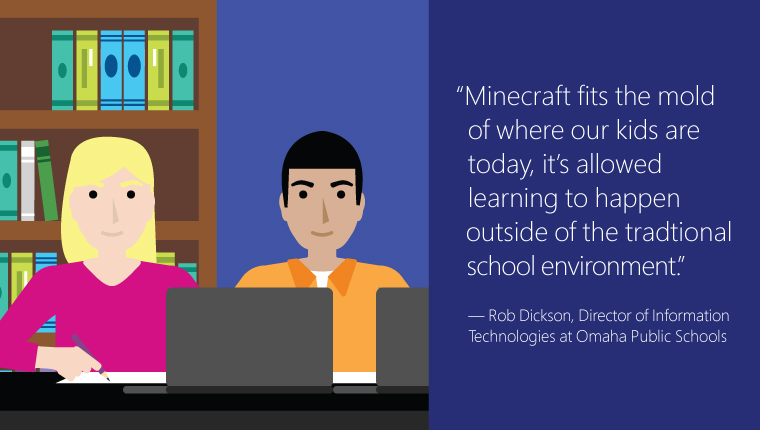
These advanced tools give teachers, parents, and students the ability to communicate and collaborate effectively, and their powerful analytics inform best practices not just for Omaha Virtual School, but for all virtual schools.
Parents become educatorsA high level of parent involvement is critical to the program, especially with younger students. That means educators have to work closely with parents to teach them about the nuances of educating children and help them understand how to embrace each child’s unique learning styles and abilities.
“A parent may learn one way, but their four children might learn many different ways,” says Omaha Virtual School Principal Wendy Loewenstein.
Educators have also worked to build trust with parents so that parents are more comfortable admitting when they’re not knowledgeable about certain aspects of education and technology. A pre-assessment of their tech knowledge and their understanding of the program’s requirements helps educators gain a better understanding of each parent’s abilities.
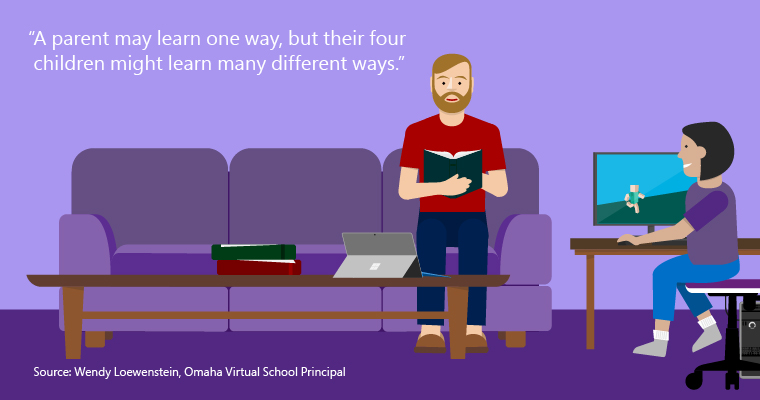
Engaging students as leaders in the classroomBecause students have such a small window of face-to-face time, they are learning new ways to collaborate and communicate in both a virtual and traditional classroom environment.
“Getting a teacher’s attention in the appropriate ways during three hours of in-class time isn’t something students inherently know how to do,” explains Mark Dowling, a third and fourth grade teacher at Omaha Virtual School.
In addition to promoting teamwork, students are encouraged to understand their roles. Although most students are tech savvy, they need to learn how to connect that ability to their learning. The Omaha Virtual School model works to build student confidence and motivate those who lack it.
Minecraft’s project-based, interactive model helps students develop problem-solving skills. “We are now a society that not only consumes technology, but creates it,” Dickson says. Students can build their imaginations inside Minecraft. Modeling in a virtual atmosphere helps creators identify problems and solutions before creating in a physical environment.
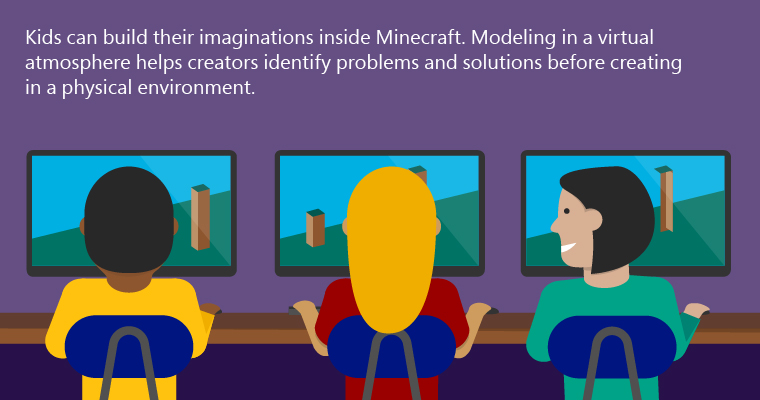
Omaha Virtual School originally anticipated using Minecraft only for the virtual school, but Omaha is also piloting it throughout the district to find out the tool’s viability at various age levels. In addition to training 50 teachers on the platform, a spattering of students in elementary, middle, and high school are using Minecraft in the classroom.
“Minecraft’s a great tool for introducing interdisciplinary activities into the classroom and for the entire STEM workflow,” Dickson says.
Although gaming is certainly second nature for many students, they have had to teach both Omaha Virtual School students and parents to use the system correctly. Not only is Minecraft used as a learning tool but also as a reward. Finding that balance can be tricky, so the team attended formal training for Minecraft in education. “We were able to open it up and talk about use cases and best practices,” says District Tech Trainer Eileen Heller.
Most of the students are already experts in the Minecraft platform, but teachers know how to connect that knowledge to the curriculum, so the model for Omaha Virtual School became students and educators teaching each other about their areas of expertise.
“It felt like learning to use a cell phone for the first time,” says Kelly Means, District Tech Trainer, and that knowledge gave students confidence. “Students stepped up and showed teachers and other students how to do things,” remembers Eileen. “Some students who don’t typically shine were able to be a leader in the classroom. It’s motivating for children to know that they can come to school and show off what they know.”
Integrating Minecraft into classroom goals“Although teachers struggled a bit with the idea of not always having a rubric,” Mark admits, “they eventually started figuring out ways to integrate Minecraft into classroom goals.”
One example: Bar graphs can be boring for students, so teachers built a bar graph in Minecraft, using farm animals as data. The students then had to do the same, making collaborative decisions about the numbers of each animal and building bar graphs to show their thinking.
“There are always students who will sit back and let things happen, so you need to constantly encourage the students to know their roles and work together,” Mark adds.
Mark and his team looked at how the program could possibly work its way into the grading system. “We knew that it would provide an increase in engagement but using it as a structured approach was something new.”
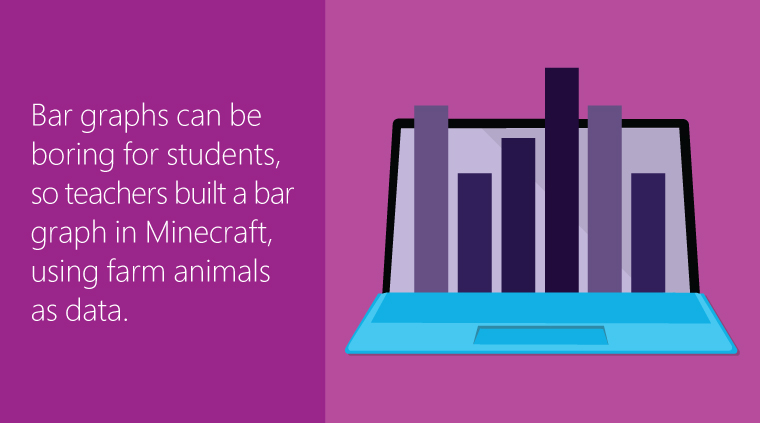
They had a meeting with the first adopters who started training in early December. Prior to that, there was usage of Minecraft in the district, but it wasn’t truly being leveraged as part of the pedagogy. A lot of teachers have taken the third quarter to increase their knowledge and usage of the program.
Minecraft’s design gives teachers the ability to see when students are logged in and learning, how many times they’ve attempted assignments, and other vital data that helps them stay engaged when students are working alone. Its student-centered learning model offers the ability to map projects and activities directly to specific learning outcomes and curriculum standards. The goal for early adopters was to show from teachers’ perspectives how it truly benefits student learning and meets course objectives.
“On the district level,” Eileen says, “they wanted it to affect the students and teachers in how they provide instructions and learning for the students. We’re hoping this helps open teachers’ eyes to more non-traditional teaching methods.”
Into the futureThe Omaha School District hopes to inform best practices for all virtual schools while ensuring the success of current Omaha Virtual School students.
“Universities and trade schools have dominated the online education world,” Wendy says. “We’re preparing children for online learning now so that they are prepared when they get to college.”
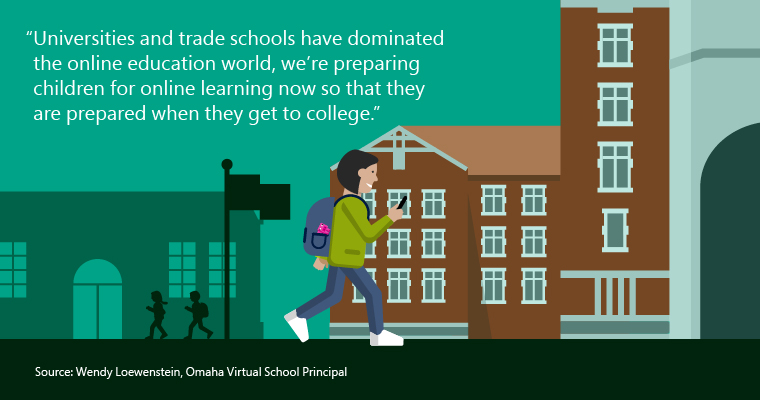
As technology continues to develop, the likelihood of traditional and virtual schools merging becomes more of a reality. Although Rob Dickson and the team at Omaha Virtual School support that vision, they are careful to prioritize success over growth. “Our concern will always be quality education over expansion,” Rob says.
Microsoft is proud to partner with Omaha Virtual School on their journey to transforming teaching and learning.
Related Content
- See how Omaha Public Schools aligns technology to student learning and teacher coaching goals
- Explore Omaha’s transformation showcase
- Read more Real Stories of Digital Transformation

